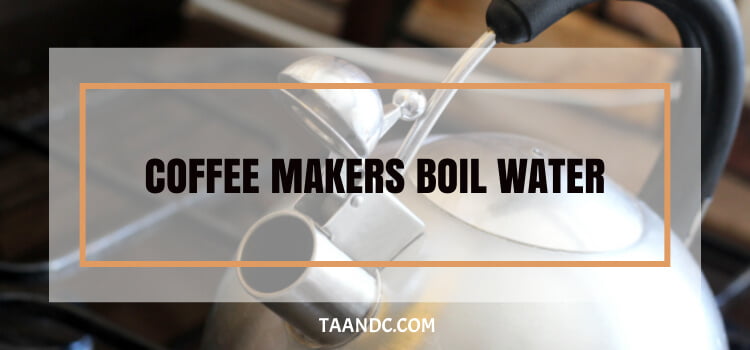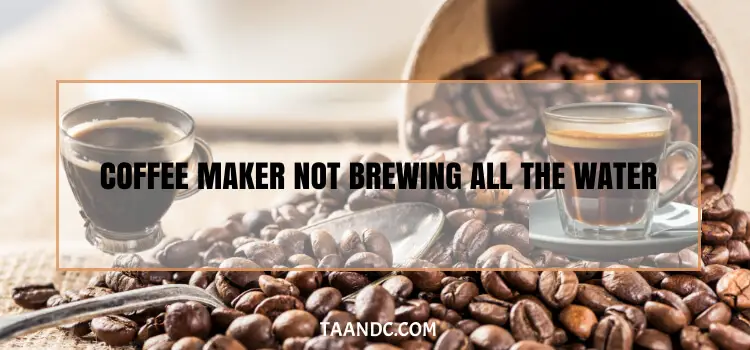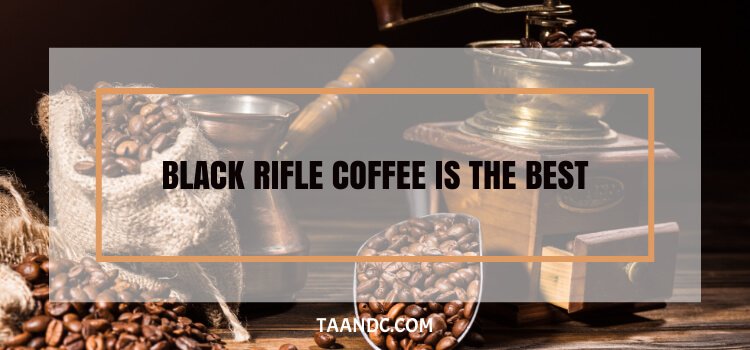Let's dive into the intriguing world of coffee makers and their water-boiling magic! When it comes to "Do Coffee Makers Boil Water?" my seasoned experience has taught me that they indeed do. These nifty devices blend technological innovation with the art of brewing. It's a symphony of anticipation, from the satisfying gurgle as the water reaches the perfect temperature to witnessing steam rise. So, whether using a classic drip machine or a modern espresso marvel, embrace the journey from water to excellent coffee – a true delight for any coffee enthusiast!

Do Coffee Makers Boil Water?
Boiling water in a coffee maker is a great way to save time and make your mornings easier. With the right coffee maker, you can have boiling water ready to make tea or other hot beverages without waiting by the stove or for an electric kettle to finish cooking. Fill the carafe with cold water to the desired level, then press the "on" button. The machine will automatically turn off when it reaches the right temperature for brewing a cup of coffee.
They also offer more convenient options if you need boiling water straight away. You can put in however much water you want into the machine and turn it on, or adjust settings if your device allows it so that it boils faster. Once ready, twist the handle and pour it into whatever dish or container you like. This is especially handy if you make something that needs boiling liquid, such as soup or stew, in minutes.
Drip Coffee Maker
Drip coffee makers are a popular option for coffee lovers who need their morning caffeine fix. Because they typically brew the beverage in a carafe rather than single-cup pods, they require significantly more than just heated water. It takes 2 to 10 minutes for the drip coffee makers to heat up and produce coffee. This means getting your hot cup of java will take longer than other machines, like Keurig or single-cup machines.
Drip machines usually have easy-to-use controls that allow you to set the strength of your coffee and how long it should be heated–often based on time rather than water temperatures like Keruigs or other machines. Despite taking longer to heat up, many people prefer a streamlined approach and a carafe method of brewing, compared to the process of first inserting pods into a Keurig machine before getting their desired drink out. Drip Machines may take two times as long but often produce better flavors and tastes since one can control all aspects of the brewing process, from temperature to grind.
Read More: Breville vs Philips Espresso: Brewing Brilliance
SStovetopKettles
SStovetopkettles are a popular and cost-effective way to boil water in the home. Heating a kettle on a stove over gas or electric heat sources is simple. Filling the vessel with water before turning on the heat source quickly brings it to boiling once the flame is lit. Steam travels up the kettle's spout as steam is produced, making an unmistakable whistle. When using this kitchen appliance, users must remember to turn off the heat source when they hear the whistle to avoid boiling out all of its content and potentially damaging their equipment.
The prevalence of sstovetopkettles in households attests to their convenience as a water-boiling method, but they should be used responsibly. Boil only what you need for your application and turn off the burner immediately upon hearing its iconic sound. Otherwise, you risk burning or cracking the vessel itself or making fast work of wasting precious resources. Next time you reach for your whistling tea kettle to make some hot drink or breakfast oatmeal, make sure your cognitive fire alarm sounds when it's time to turn off the burner!
Temperature Settings & Brewing Process
The temperature at which water is heated in a coffee maker plays a crucial role in brewing. Different coffee makers allow users to adjust the temperature settings based on their preferences. The brewing temperature affects the extraction of flavors and aromas from the coffee grounds.
Each coffee maker brand may have its own temperature range for brewing. Some brands prioritize brewing at higher temperatures to ensure a strong and bold flavor profile. Others opt for lower temperatures to produce a smoother and milder cup of coffee. Coffee enthusiasts need to choose a brand that aligns with their taste preferences.
Several coffee maker brands adhere to the recommended temperature range of 195-205°F. These brands ensure the water is heated to an ideal temperature, producing a rich and flavorful cup of coffee. Examples of such brands include Breville, Technivorm, and Bonavita.
The water temperature used in brewing dramatically affects the taste and quality of the coffee. Too hot water can lead to over-extraction, resulting in a bitter taste. On the other hand, if the water is not hot enough, the coffee may taste weak and lack depth. Maintaining the recommended temperature range allows optimal extraction and flavor balance, achieving the best coffee tasting.
In conclusion, the temperature settings of coffee makers significantly impact the brewing process and the final cup's taste. Selecting a brand that aligns with temperature preferences is essential to ensure a satisfying coffee experience.
Boiling Water vs. Heating Water
When it comes to coffee makers, there is a distinction between boiling water and heating water. Understanding this difference is crucial in achieving the perfect cup of coffee.
Coffee makers do not typically boil water but rather heat it to a temperature close to boiling. Boiling water is when water reaches its boiling point of 212°F (100°C), creating bubbles and steam. However, brewing coffee requires water at a slightly lower temperature to avoid a bitter taste.
The process of heating water in coffee makers involves a heating element, usually located at the bottom of the machine, that warms the water in a reservoir. As the water is heated, it rises through a metal tube. It comes into contact with coffee grounds, thereby extracting the flavor.
Several factors determine the boiling point of water, including altitude and air pressure. Water boils at lower temperatures at higher elevations due to reduced air pressure. Coffee makers factor in these variables to heat water to the ideal temperature for brewing coffee.
The perfect temperature for brewing coffee is between 195°F and 205°F (90°C to 96°C). This temperature is essential for extracting the flavors and aromas from the coffee grounds. Modern coffee makers are designed to heat water to this specific temperature range, ensuring the best-tasting coffee.
In conclusion, coffee makers do not directly boil water but heat it to a temperature close to boiling. This precision is crucial for brewing coffee and optimizing its flavors. By understanding the distinctions between boiling and heating water, coffee lovers can appreciate the care and technology behind their favorite cup of joe.
Read More: Breville Upgrade Kit Guide: Unleashing the Full Potential
Role of Pressure in Coffee Making
Pressure plays a crucial role in brewing a great cup of coffee. By understanding how stress affects the extraction of flavors from coffee grounds, we can appreciate the importance of this element in creating a rich and flavorful beverage.
Traditional stovetop espresso makers generate pressure through the steam build-up. As the water in the lower chamber heats up, it becomes steam. It creates tension, forcing hot water to rise through coffee grounds and extracting flavors and oils as it passes. The pressure also helps to create a concentrated and robust espresso shot.
Automatic espresso machines, on the other hand, use a pump system to generate pressure. The pump forces water through the coffee grounds at high pressure, resulting in a more controlled and consistent extraction process. This allows for adjusting pressure levels to achieve the desired strength and taste of the espresso.
SStovetopespresso makers and automatic machines can extract the maximum flavors and aromas from the coffee grounds using pressure. This is why espresso, made under high pressure, often produces a more intense and flavorful cup of coffee than regular drip coffee makers.
Read More: Breville Barista Touch Vs Delonghi La Specialista: Coffee Wars
So, are Coffee Makers a Good Method to Boil Water?
Coffee makers are a convenient tool for brewing a perfect cup of coffee, but there may be more efficient choices when it comes to boiling water. While coffee makers heat the water, the process differs from traditional boiling.
Coffee makers typically use a heating element to warm water from a reservoir. The heating process is designed to heat the water to a specific temperature ideal for brewing coffee rather than achieving a rolling boil. The heating element heats the water slowly, allowing it to reach the desired temperature for brewing without reaching the boiling point.
This slower heating process can result in coffee makers taking longer to boil water than traditional methods, such as using a sstovetopor electric kettle. Additionally, the heating element in coffee makers may not be as powerful as the heating coils in electric kettles, further affecting the efficiency and speed of boiling water.
Suppose you must boil water quickly or for purposes other than brewing coffee. In that case, there may be better options than using a coffee maker. Traditional boiling methods, such as using a kettle on a stovetop or an electric kettle, tend to be faster and more efficient in bringing water to a rolling boil.
FAQ
Does A Coffee Maker Purify Water?
No, a coffee maker does not purify water. While it filters water to some extent, its primary function is to brew coffee rather than clarify it. The coffee maker's filtration system removes sediments and chlorine, improving taste but not eliminating all contaminants.
Do Coffee Makers Kill Bacteria?
Coffee makers do not necessarily kill bacteria. Hot water for brewing coffee can reduce some bacteria but may not eliminate all types. The coffee brewing temperature, usually between 195°F to 205°F (90°C to 96°C), can kill some bacteria but not all.
How Does A Coffee Machine Heat Water?
A coffee machine heats water through a process called brewing. When you pour cold water into the machine's reservoir, it is drawn into a heating element. This heating element, usually made of metal, uses electricity to generate heat. As the water passes through the heating element, it gets heated to the desired temperature for brewing coffee.
What is the perfect temperature for water in coffee machines?
The ideal temperature for water in coffee machines is typically between 195°F and 205°F (90°C to 96°C). This range allows for optimal flavor extraction from the coffee grounds, resulting in a well-balanced and flavorful cup of coffee. Too hot water can over-extract the coffee, leading to a bitter taste. At the same time, water that is too cool may not extract enough flavor, resulting in a weak or underwhelming brew.
Are There Benefits to Coffee Maker Maximum Temperatures?
Yes, there are benefits to the coffee maker, such as maximum temperatures. The maximum temperature setting on a coffee maker is typically around 200°F (93°C), and this high temperature serves several purposes. Firstly, it helps to extract the maximum flavor from the coffee grounds. When water comes into contact with the settings at a higher temperature, it removes more of the oils and compounds that contribute to the overall taste of the coffee.
Conclusion
In conclusion, properly cleaning your coffee maker is essential to prevent bacteria growth and ensure the safety of your beverage. Understanding the science behind how coffee makers heat water helps achieve the perfect brewing temperature and enhances the overall coffee-making experience. Utilizing clean water for brewing is of utmost significance as it directly impacts the taste and quality of your coffee. By following these practices, you can enjoy a delicious cup of coffee while maintaining the hygiene and longevity of your coffee maker. So, remember to clean your coffee maker regularly, appreciate the science behind heating water, and use clean water for brewing to savor the best-tasting coffee every time.


